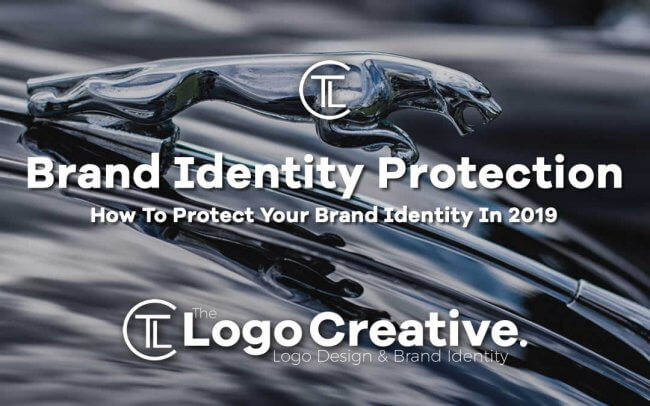Every business owner is aware that the success of the business depends on many different factors, but not many are aware that branding is one of the most important ones. In this article we discuss So how do you How To Protect Your Brand Identity In 2019?
We’re not saying that business owners don’t understand the importance of developing a strong brand identity for their business – they do, but instinctively. They invest a lot of money, energy, time, and motivation to come up with a unique value proposition, decor, cuisine, and concept. To develop a distinctive marketing model, color scheme, logo, a distinctive name. All of these things are extremely important and therefore mandatory, but that’s not where the story ends. While the internet is crawling with articles which offer advice and in-depth guidelines for these aspects, they rarely tell you about the equally important part of your brand identity – its protection.
Starting out and building your business is a lot of work, but a reward is also a big one when you see that your creation has become successful and started to bring s steady stream of income. Unfortunately, this very success can also turn your business into a target for others who are in search of a shortcut. And the first attack will be launched at your branding since it’s the first thing people associate your business with, and therefore one of its most important elements. There will always be those who will try to steal your good image and trick others into thinking your business is actually theirs, or to debase your standing within the industry. So if you don’t protect your brand identity these people will walk away with your customers.
Table of Contents
Defining Brand Identity
First of all, your brand identity is a collection of everything visual about your brand. Whether you’re a small business, firm, or a corporation, it’s the manner in which you represent yourself to the public. In other words, brand identity is what you, your prospects, and your customers see. This visual representation consists of various elements such as logo and its variations, color palette with your key brand colors, typographic treatments and typefaces, style guide, a library of graphical elements, a consistent style for content and images, etc. In order to create a strong brand identity, you need to take all these disparate visual elements and put them together into a complementary system. Every time you show the elements of your brand identity, they need to be consistent in their feel, color, scope, use, appearance, etc.
At the same time, your brand identity represents your business’ personality and the promise you’ve made to your customers. After the customers have interacted with your brand, its identity is what you want them to walk away with. So it’s also a combination of what you want people to feel during the interaction, how you communicate your services and products, and your values.
You need to take all this into consideration and identify the elements of your brand which are unique and therefore should be protected. This usually includes things such as symbol or logo and your company name, but it’s up to you to decide what are the distinctive elements of your business. When you come up with the list, it’s time to look at the ways you can protect those elements.
The First Layer of Protection

When it comes to the protection of your brand identity, domains are one of the cheapest ways to accomplish this. They are fairly inexpensive, usually from 5 to 10 bucks per year depending on which company you use as a registrar. They can be even cheaper if you can find any applicable coupon codes. Nevertheless, domains should be considered only as of the first line of protection, but that doesn’t mean you don’t need them.
The reason why domains are important lies in the fact that, no matter how wonderful place the internet might seem, it’s also a place full of opportunists who are just waiting for you to make a wrong step. There are three versions you can purchase when selecting a domain name for your business – the .net version, the .org version, and the .com one. You can buy all of these versions of the same name, and it’s recommendable to do so. Of course, all three versions are not mandatory, but if your website is a money-making one, this will enable you to be on the safe side.
Multiple domains are crucial if your business name is a complex one and can be easily mistyped into the browser. This is how other people can piggyback on traffic which should have ended up on your site, and multiple domains will prevent this from happening by redirecting all the traffic to your main site. This is actually nothing more than smart thinking, but it’s nevertheless solid brand protection. The same protection can be applied in case your name consists of words which can be easily rearranged since this would lead to confusion if someone else were to create a site in a similar vertical.
Capture The Value And Harness The Power
In order to fully protect your brand identity, you’ll need a trademark. This protection covers practically everything since it’s defined as a design, symbol, phrase, or word, or a combination of all these, which identifies and distinguishes the source of the goods of one party from all of the others. Once you’ve registered a trademark with the United States Patent and Trademark Office (and received that famous ®) you also acquire certain legal rights to use and protect that trademark. In order to file a trademark, you just need to make sure that no one else has already registered the same one, and you can easily check this by searching through the Trademark Electronic Search System (TESS). After you’ve determined that your desired trademark is available, know that there’s a lot of paperwork waiting ahead, so it should be wise to hire a lawyer. Maybe you are considering to do it yourself and save money, but we think that it’s worth spending some money if that’s gonna ensure you’ve protected your brand in the right way.
Although a strong brand identity might seem invaluable at first glance, it actually does hold a dollars-and-cents value that can easily be exploited and therefore must be protected. A large portion of this value lies in intangible assets such as a reputation for great services, atmosphere, customer loyalty, goodwill, recognition, etc. so it might be tricky to apply for some tangible protection, and this is where a trademark comes in handy. Trademarks are primary means of protection precisely because of the fact they can capture the value and harness the power of brand identity. Their economic value is especially important when the time comes to expand or to sell your business. You should look at trademarks as vehicles by which all the intangible values of your brand are exploited, meaning licensed, transferred, priced, etc. We don’t need to point out what advantage a strong and legally protected trademark will provide if you decide to turn your business into a franchise.
It’s important to know what can be filled as a trademark and what can’t. It can be a name, it can be a logo with or without words, but it can be even a slogan or a specific signature item („Big Mac“, for example). Note that, although it is important to register a corporate name with the Secretary of State, to register it as an assumed (or DBA) name in the country clerk’s office, or to register it as a domain name for your website, that doesn’t necessarily mean you’re trademarked. You need to register your corporate name as a legal prerequisite to doing business, but it only represents the way your entity is identified for the purposes of signing contracts and paying taxes. We’ve already said that a domain name is a valuable asset, but at its core, it’s just the equivalent of an easy-to-remember phone number or street address. Of course, domain names and corporate names can function as trademarks, but not if you only register them with a domain name registrar or with the state, in which case they don’t provide any legal protection.
International Urgency
 What many business owners tend to forget is that trademark protection is strictly a country-by-country proposition. This means that registration in one country won’t help you with many others. Furthermore, in some countries, the first party to file for registration will get the rights even if it’s not using the mark at all. That’s why it’s mandatory to take care of your overseas design protection as soon as you start to seriously contemplate expending into a foreign country. Otherwise, your investment to expand into a new market could end up with a charge for infringement issued by some unscrupulous pirate who has registered your trademark before you.
What many business owners tend to forget is that trademark protection is strictly a country-by-country proposition. This means that registration in one country won’t help you with many others. Furthermore, in some countries, the first party to file for registration will get the rights even if it’s not using the mark at all. That’s why it’s mandatory to take care of your overseas design protection as soon as you start to seriously contemplate expending into a foreign country. Otherwise, your investment to expand into a new market could end up with a charge for infringement issued by some unscrupulous pirate who has registered your trademark before you.
After The Registration
The protection of your brand identity doesn’t end with trademark registration. You could jeopardize that protect yourself if you don’t use the trademark properly. That’s why it’s mandatory to make sure you and everyone else in your business are using trademarks correctly and consistently. Pay attention to the colors, logo, fonts, and spelling – everything needs to be the same everywhere, every time. As your business expands, this becomes even more important.
Although registered protection has legal consequences, it’s not a magic talisman – you need to monitor and enforce it. It’s always up to you not to let any competitor use your brand identity to drive their business. You need to keep an eye out for any potentially infringing marks such as names and logos and to pursue them vigorously if you find them. In most cases, a letter from an attorney will be quite sufficient, but there might be cases when you’ll have to take more aggressive legal action. All the steps you’ve taken to protect your brand identity will come to nothing if you ignore these infringements.
Everything points out that 2019 will be the year of the biggest competition we’ve ever seen so there will be many of those who are prepared to play dirty just to stay afloat. If you want to protect all the hard work and money you’ve invested in your brand identity, you need to make a list of its unique elements and register them accordingly. You can start with domain names right away, but all the intangible assets will be fully protected only after trademark registration. Think in advance in terms of international expansion, make sure you continue to use the trademarks properly, and keep an eye on any potential infringements.
Author Bio
Nick Brown is a co-editor at Media Gurus. Besides working there he is really into psychology and the arts.


